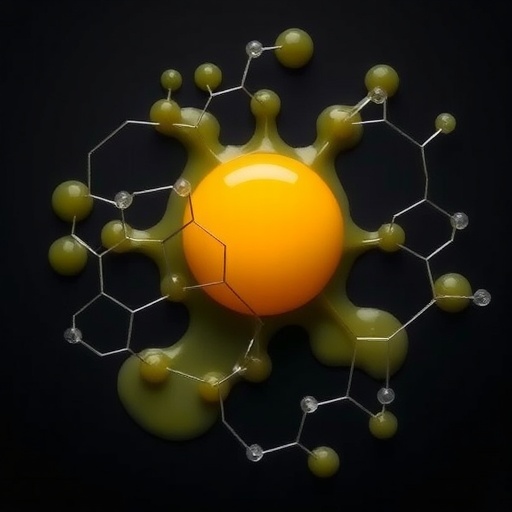As the global population ages, osteoporosis continues to pose a formidable challenge to public health, leading to increased risks of fractures, chronic pain, and diminished quality of life. Conventional treatments for osteoporosis, while effective in reducing fracture risk by modulating bone remodeling dynamics, are often accompanied by undesirable side effects such as gastrointestinal upset, atypical fractures, or osteonecrosis of the jaw. Consequently, there is an urgent need for safer, more sustainable therapeutic strategies that target the pathological bone resorption process underlying osteoporosis.
Recent advances in functional foods and nutraceuticals have turned scientific attention toward bioactive compounds derived from natural sources. Among these, egg yolk—a complex biological matrix rich in proteins, phospholipids, and lipoproteins—has emerged as a promising candidate for bone health interventions. Phosvitin, a major phosphoprotein in egg yolk, is known for its mineral-binding properties, suggesting a potential regulatory role in bone metabolism. However, mechanistic insights into how specific egg yolk-derived fractions influence the cellular constituents responsible for bone resorption have remained elusive.
A groundbreaking study from the University of Alberta, recently published in Food Science of Animal Products, elucidates the inhibitory effects of water-soluble egg yolk hydrolysates on osteoclastogenesis, the process by which osteoclasts—the bone-resorbing cells—differentiate and mature. The research primarily focuses on distinct fractions obtained from egg yolk hydrolysates, notably three water-soluble fractions designated as FA, FB, and FC, with further subfractionation of FC into FC1 and FC2 based on molecular weight (<3 kDa and >3 kDa, respectively).
This investigation employed RANKL-induced RAW264.7 macrophage cultures, a well-established in vitro model for osteoclast differentiation, to systematically assess the impact of these hydrolysate fractions on osteoclast formation and function. The FC fraction demonstrated superior efficacy in attenuating osteoclastogenesis compared to FA and FB, with the FC1 subfraction exhibiting markedly enhanced inhibitory potency. Quantitative analyses revealed that at a concentration of 1,000 µg/mL, FC1 reduced the number of tartrate-resistant acid phosphatase (TRAP)-positive osteoclasts by more than 50%, underscoring its robust anti-osteoclastogenic capacity.
At a molecular level, FC1 modulates pivotal signaling cascades implicated in osteoclast differentiation. The receptor activator of nuclear factor κB ligand (RANKL) activates mitogen-activated protein kinases (MAPKs)—including p38, c-Jun N-terminal kinase (JNK), and extracellular signal-regulated kinase (ERK)—which orchestrate the transcription of osteoclastogenic genes. The study demonstrates that FC1 effectively suppresses the phosphorylation of these MAPK pathway mediators in a dose-dependent manner, disrupting the intracellular signaling necessary for osteoclast maturation.
Beyond inhibition of osteoclastogenesis, FC1 exerts pro-apoptotic effects on mature osteoclasts, a dual mechanism beneficial for curbing excessive bone resorption. Flow cytometric analyses detected increased populations of both early and late apoptotic cells upon FC1 treatment, signifying its ability to induce programmed cell death in osteoclasts. This two-pronged approach—impeding differentiation and inducing apoptosis—positions FC1 as a unique bioactive compound with the potential to recalibrate bone remodeling homeostasis more effectively than agents acting via a single pathway.
The implications of these findings extend beyond basic science, heralding a novel avenue for osteoporosis management via functional foods or dietary supplements enriched in egg yolk-derived bioactive fractions like FC1. By integrating these natural compounds into therapeutic strategies, it may be possible to alleviate patient concerns regarding synthetic drug side effects while sustaining efficacious control of pathological bone loss.
Jianping Wu, the senior researcher spearheading this project at the University of Alberta, highlights the therapeutic promise of FC1. “Our isolation of the water-soluble FC1 fraction from egg yolk uncovers a natural agent capable of simultaneously suppressing osteoclast differentiation and promoting apoptosis. This dual action could revolutionize current approaches to osteoporosis treatment, especially considering the regulatory complexity of bone resorption pathways.”
While the in vitro results are compelling, the researchers emphasize the necessity of advancing to in vivo studies to verify FC1’s efficacy in whole-animal models. Pharmacokinetics, bioavailability, and metabolic stability will be critical parameters in determining the feasibility of FC1’s translation into clinical applications. Future investigations will also need to elucidate the structural identity of the active peptides or molecules within FC1 responsible for the observed biological effects.
Moreover, the sustainable sourcing of egg yolk protein hydrolysates presents an attractive advantage for scalable production, potentially leveraging existing agricultural and food industry infrastructures. This aligns with the broader global trend toward natural product development that is environmentally and economically viable.
Egg yolk hydrolysates like FC1 could also synergize with other bone health-promoting agents, such as calcium, vitamin D, and phytoestrogens, providing multifaceted nutritional strategies to prevent or mitigate osteoporosis. The integration of such bioactive fractions into functional foods or nutraceuticals could offer accessible, non-pharmacological options suitable for widespread consumer use.
In conclusion, this pioneering research unveils water-soluble egg yolk hydrolysate FC1 as a potent inhibitor of osteoclastogenesis and inducer of osteoclast apoptosis, identifying a natural compound with significant potential to transform osteoporosis management. As the aging demographic continues to expand globally, innovative and safe interventions like FC1-derived products may prove instrumental in reducing the burden of osteoporotic fractures and improving the quality of life for millions.
Subject of Research: Natural bioactive compounds from egg yolk hydrolysates inhibiting osteoclastogenesis for osteoporosis management.
Article Title: Water-soluble egg yolk hydrolysate shows osteoclastogenesis inhibitory effects
News Publication Date: 10 June 2025
Web References:
Image Credits: Food Science of Animal Products, Tsinghua University Press
Keywords: Osteoporosis, osteoclastogenesis, egg yolk hydrolysate, FC1 fraction, MAPK signaling, apoptosis, bone resorption, natural bioactive compounds, functional foods, bone health




